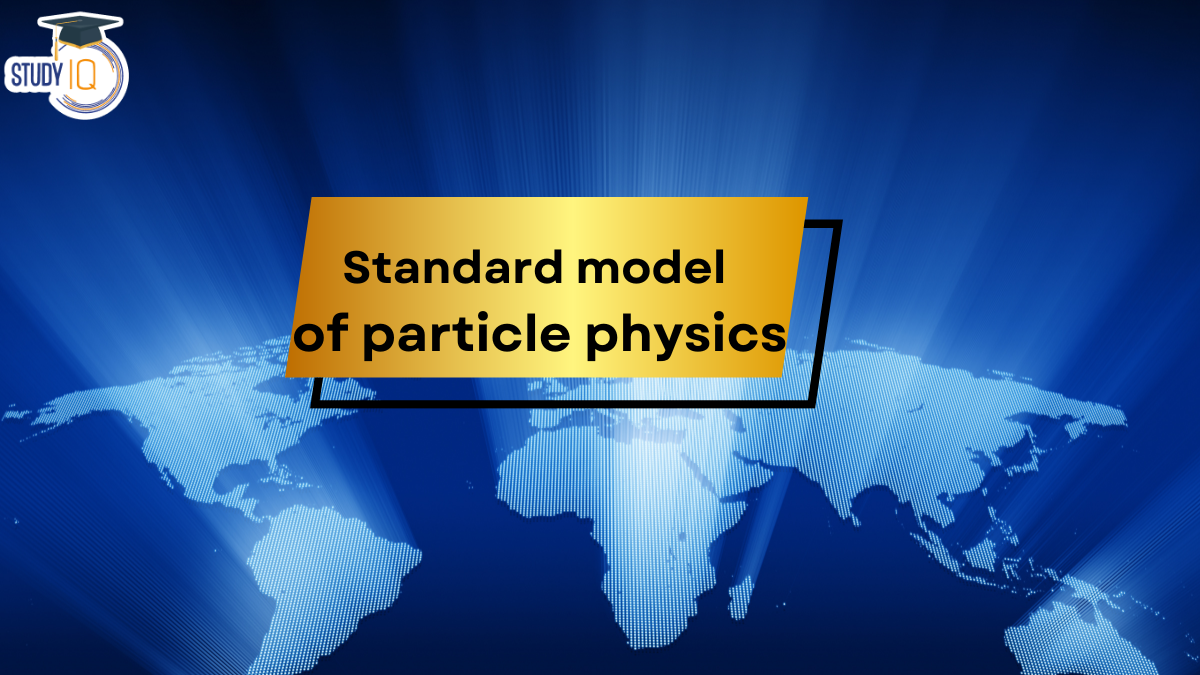Table of Contents
About Standard Model of Particle Physics
- It is a theoretical framework that describes the fundamental particles and forces that govern the universe, excluding gravity.
- It categorises all known elementary particles into two main groups: fermions (matter particles) and bosons (force carriers)
- Fermions:
- Quarks: Building blocks of protons and neutrons.
- Leptons: Includes electrons and neutrinos.
- Bosons:
- Gluons: Mediate the strong force.
- W and Z bosons: Responsible for the weak force.
- Photon: Carrier of electromagnetic force.
- Higgs boson: Provides mass to other particles through the Higgs mechanism.
- Higgs Mechanism: Discovered in 2012, it explains how particles acquire mass through the Higgs field.
Significance of the Standard Model in Various Fields
- Particle Physics: Provides a comprehensive understanding of particle interactions and fundamental forces.
- Cosmology: It helps to explain phenomena such as the formation of elements in the early universe and cosmic microwave background radiation.
- Technology Development: Advances in particle physics have led to technologies like MRI machines, radiation therapy and advancements in computing.
Challenges from James Webb Space Telescope (JWST) Observations
- JWST has discovered massive, fully-formed galaxies that existed just 400-650 million years after the Big Bang. This is much earlier than what the Standard Model of cosmology predicted.
- According to the standard model, galaxies at this early stage should have been smaller and in the initial stages of development, rather than being large and mature as JWST has observed.
- Also the model doesn’t account for dark matter and dark energy, which make up 95% of the universe.


 SEBI’s SWAGAT-FI Framework for Low-Ris...
SEBI’s SWAGAT-FI Framework for Low-Ris...
 How the US and China Are Sabotaging the ...
How the US and China Are Sabotaging the ...
 Village Defence Guards (VDGs): Role, Str...
Village Defence Guards (VDGs): Role, Str...

























